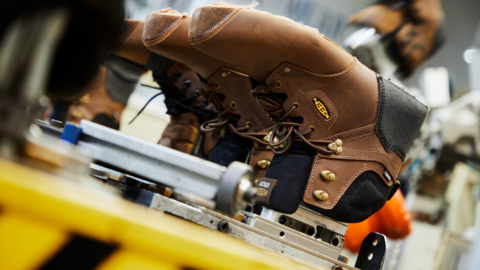Sole Revolution: Can American-Made Shoes Compete in a Global Economy?
In Kentucky, amidst the bustling landscape of American manufacturing, Keen, a family-run shoe company, is unveiling a new factory—a move emblematic of the Trump administration’s “America First” vision. However, the reality of this factory paints a much more intricate picture of modern manufacturing in the U.S. With only 24 employees operating sophisticated robots for tasks like fusing soles and trimming materials, this factory underscores a significant shift away from the labour-intensive production methods of the past.
Keen’s Chief Operating Officer, Hari Perumal, notes that high labour costs in the U.S.—10 to 12 times more than those in Asia—pose a formidable challenge. The company initially started domestic production in 2010 amidst rising costs in China, a move that now provides a buffer against tariffs. Nevertheless, such transitions are rife with complexity, reflecting a broader trend where brands like Nike, Adidas, and Under Armour also struggled to develop manufacturing technologies in the U.S.
Currently, Keen assembles only 9% of its shoes in America, a stark reminder of the intertwined global supply chains that dominate footwear production. Historically, the U.S. witnessed a boom in manufacturing post-World War II, which later wavered in the wake of globalization—resulting in a mere 1% of shoes sold in the country being American-made.
Pepper Harward, CEO of Oka Brands, another U.S.-based shoe manufacturer, faces similar hurdles in sourcing affordable components domestically. Harward’s factory in Georgia manages to craft shoes for New Balance and Ryka, yet admits the ecosystem for U.S. shoe production is not self-sustaining. His company has to innovate, even sourcing materials from the automotive industry to meet demands.
Both Keen and Oka recognize the necessity for patience, investment, and innovation to thrive. Despite growing interest in local manufacturing spurred by tariffs and pandemic-induced supply chain disruptions, Harward remains skeptical about the feasibility of a complete return to domestic production, estimating only 6% might realistically be achievable.
Keen’s ambition reflects a long-term strategy typical of family-run businesses, where decisions can focus on values over quarterly profits. As they embark on this manufacturing venture, it does not signify a nostalgic return to the past but rather a glimpse into an evolved American manufacturing future—one where technology harmonizes with tradition.

